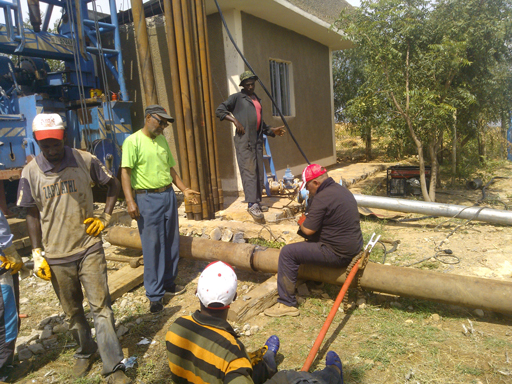6.2.2 Maintenance
Maintenance (Figure 6.4) refers to planned technical activities or activities carried out in response to a breakdown, to ensure that assets are functioning effectively, and requires skills, tools and spare parts (Carter, 2009). There are two types of maintenance:
- Corrective or breakdown maintenance: this is carried out when components fail and stop working. Breakdown is common in many utilities in Ethiopia and occurs as a result of poor preventive maintenance (explained next).
- Preventive maintenance: this is a regular, planned activity that takes place so that breakdowns are avoided. Examples of preventive maintenance would include servicing of equipment, inspecting equipment for wear and tear and replacing as necessary, cleaning and greasing moving parts of equipment, and replacing items that have a limited lifespan. Preventive maintenance is important because it ensures that the asset fulfils its service life. It also prevents crises occurring and costly repairs (in terms of time and money) being needed.
If you consider the example of the pump mentioned in Section 6.2.1, regularly checking the electrical parts, the components of the switch/operating board and inspection of power lines are tasks that can be regarded as preventive maintenance. If the pump fails due to operational problems or lack of preventive maintenance, it will have to be repaired or replaced – an example of breakdown maintenance.

Preventive maintenance ensures that the different components of the water supply system perform correctly over their service life (their expected lifetime). This in turn avoids the occurrence of a major fault or breakdown in the water supply system that calls for corrective maintenance that is many times more expensive. In some cases, the problem may require full replacement of a costly item of equipment, which also takes a significant amount of time to achieve. As a result, the service level of the water supply system will reduce or even be interrupted over the period of maintenance, causing significant inconvenience to users and reducing the income of the water utility.
Utilities should always ensure that an adequate level of preventive maintenance is in place for all of their assets in the water supply system. This requires that adequately skilled persons are employed as operators or maintenance crew, and that they are provided with the proper tools. A strict and regular schedule of work is also required to ensure that preventive maintenance is carried out at the appropriate time. The next section considers strategies and plans for maintenance.
6.2.1 Operation
